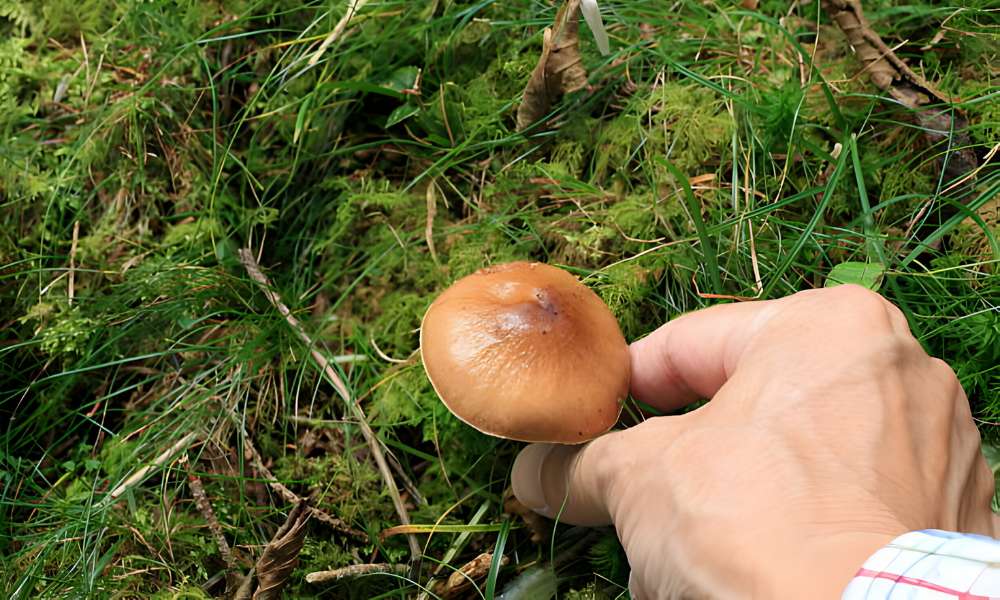Struggling with unwanted mushrooms popping up in your lawn are not alone. Learning how to get rid of mushrooms in your lawn is crucial for maintaining a healthy, aesthetically pleasing outdoor space. Not only does eliminating these fungi help in keeping your yard looking neat, but it also plays a significant role in the overall health of your yard. In this article, we’ll guide you through effective strategies to bid farewell to these unsightly intruders. By addressing the root causes and employing practical solutions, you can achieve a lush, mushroom-free yard. Discover why tackling this issue is important and how you can achieve a beautiful outdoor area without the hassle of unwanted mushrooms. Let’s dive in and transform your yard into the envy of the neighborhood!
Why Do Mushrooms Grow In My Lawn?
Mushrooms are fungi that thrive in moist, humid environments with organic matter to feed on. When they appear in your lawn, it is often a sign of decaying organic material beneath the surface, such as old tree roots, fallen leaves, or buried wood. The presence of mushrooms indicates that the fungi are breaking down this organic matter and returning nutrients to the soil.
Are Mushrooms Harmful To My Lawn?
Mushrooms themselves are not harmful to your lawn. In fact, they can even be beneficial as they break down organic matter and help with nutrient recycling in the soil. However, the presence of mushrooms in your yard may indicate that there is decaying organic material present, such as dead roots or wood chips, which could potentially harm your grass if left untreated.
Can I Just Mow Over The Mushrooms To Get Rid Of Them?
Mowing over mushrooms may temporarily remove the visible parts above ground, but it will not eliminate the underlying mycelium that is responsible for their growth. In fact, mowing can spread the spores of the mushrooms further, leading to more growth in the future. To effectively get rid of mushrooms, it’s important to address the root cause, which is usually excess moisture and organic matter in the soil.
Acceptable Lawn Drainage
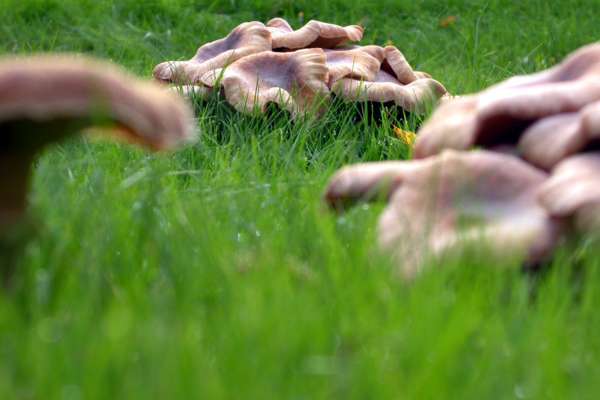
One of the key strategies to get rid of mushrooms in your lawn involves ensuring your lawn has acceptable drainage. Excess moisture is a primary catalyst for mushroom growth, as fungi thrive in wet conditions. Improving your lawn’s drainage can be achieved by aerating compacted soil, creating sloped surfaces to encourage water runoff, and installing French drains if necessary. This doesn’t just help in controlling mushrooms but also benefits the overall health of your yard, ensuring that water reaches the roots of your grass without pooling on the surface. Remember, a well-drained yard is less inviting to mushrooms and more conducive to vibrant grass growth.
Balanced Fertilization For Mushroom Control
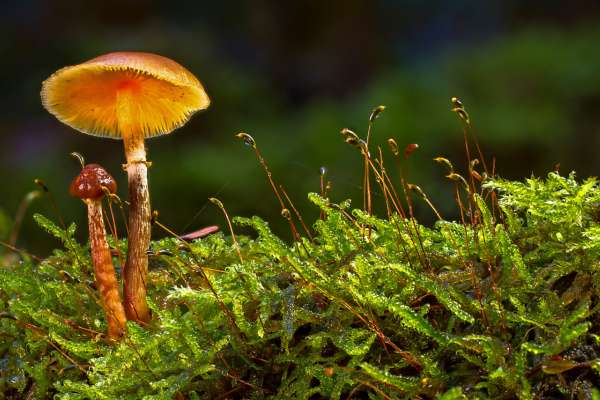
Fertilizing your lawn plays a pivotal role in both its health and its susceptibility to mushrooms. A balanced fertilization strategy ensures that your yard receives the nutrients it needs without creating an environment that’s overly conducive to mushroom growth. Excessive use of certain types of fertilizers, especially those high in organic matter, can feed not only your grass but also the fungi. To prevent this, opt for a balanced, slow-release fertilizer that nourishes your yard over time without giving mushrooms a feast to thrive on. By maintaining this balance, you’re taking a proactive step in keeping your yard mushroom-free.
Effects Of pH On Mushroom Growth
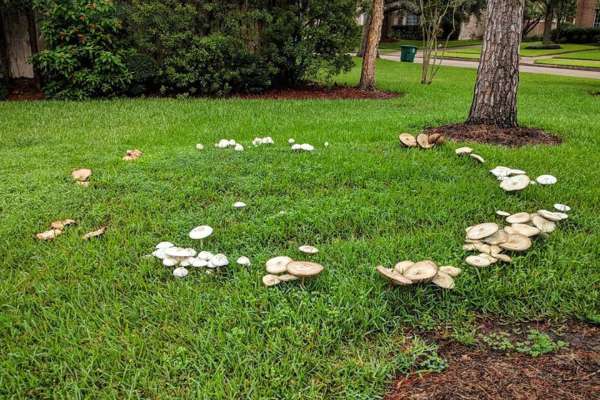
The pH level of your soil directly influences the growth of mushrooms. Most yard fungi prefer a slightly acidic to neutral pH range. Testing your soil’s pH can provide insight into whether your lawn’s conditions are conducive to mushroom growth. If your soil is too acidic, applying lime can help raise the pH, making the environment less hospitable to mushrooms. Conversely, if the soil is too alkaline, sulfur can be applied to lower the pH. Adjusting your yards pH not only discourages mushrooms but also ensures that your grass gets the optimal conditions for growth, highlighting the importance of regular soil testing.
Installing Barriers To Forestall Mushroom Spread
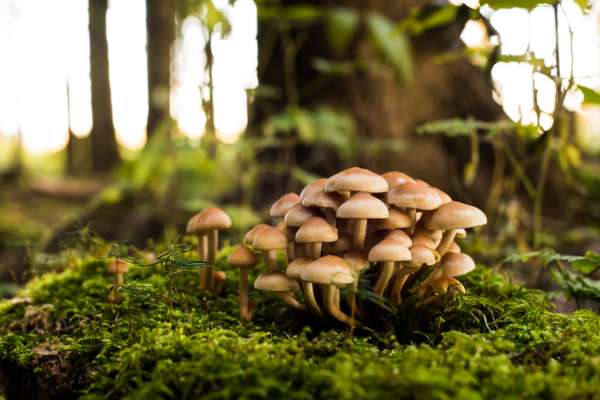
To get rid of mushrooms across your lawn, installing physical barriers can be an effective strategy. This could involve creating borders around trees and garden beds using materials like plastic edging or metal barriers dug into the soil. These barriers help contain the spread of mycelium, the vegetative part of the fungus, which can spread underground and give rise to mushrooms in different parts of your yard. While this method may require some effort to implement, it’s a worthwhile investment in maintaining the aesthetics and health of your outdoor space, ensuring that mushrooms are kept at bay.
Fungicides For Mushroom Elimination
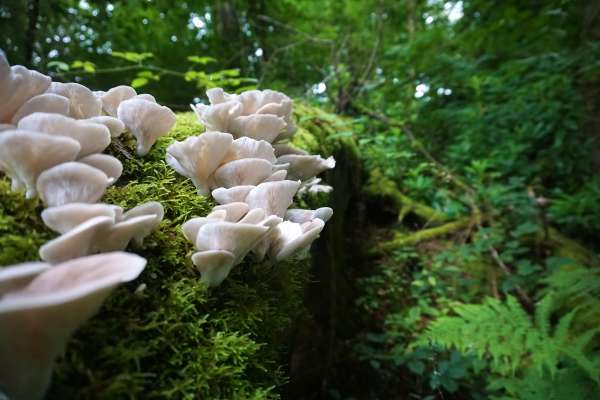
Utilizing fungicides is a common method for tackling mushroom issues in lawns. These chemical agents are specifically formulated to kill fungi and can be an efficient way to manage mushroom outbreaks. However, it’s crucial to choose fungicides that are safe for lawns and target the specific type of mushrooms you’re dealing with. Application timing and following the manufacturer’s guidelines are key to ensuring the fungicide works effectively without harming your grass. Remember, while fungicides can offer immediate relief from mushrooms, they don’t address the underlying causes of fungal growth, such as excessive moisture or organic debris. Therefore, fungicides should be part of a broader yard care strategy.
Hiring A Lawn Care Professional
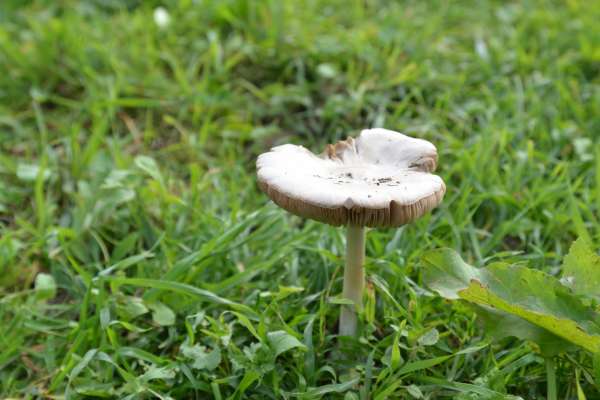
For those who prefer a hands-off approach or face a stubborn mushroom problem, hiring a lawn care professional might be the best course of action. These experts can assess the specific conditions of your yard, identify the root causes of mushroom growth, and implement targeted solutions. Professional services might include soil aeration, fungicide application, and modifications to your lawn’s watering schedule. With their knowledge and expertise, lawn care professionals can not only help you get rid of mushrooms but also enhance the overall health and beauty of your yard.
Watering In The Morning
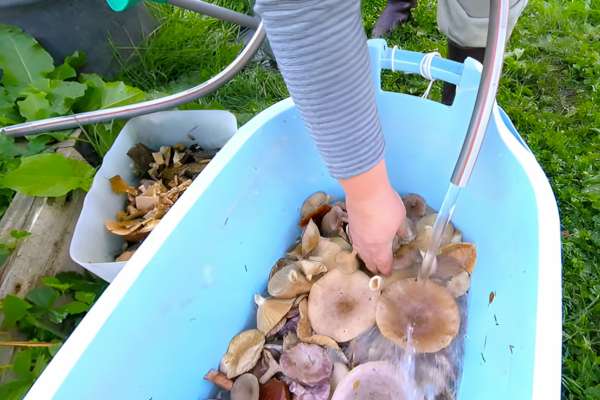
Watering your lawn in the morning is not only beneficial for the health of your grass but can also help prevent the growth of unwanted pests such as mushrooms. By providing your lawn with water early in the day, you allow the grass to absorb moisture and nutrients efficiently, preventing excess moisture from lingering on the surface and creating a prime environment for mushroom growth. Additionally, watering in the morning allows any excess water to evaporate throughout the day, reducing the chances of fungal diseases developing in your yard.
Promoting Sunlight Infiltration In The Lawn
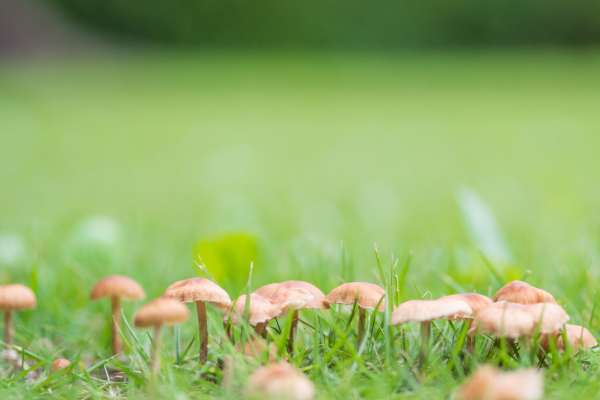
Maximizing sunlight infiltration in your lawn is crucial for promoting healthy grass growth and reducing the presence of mushrooms. One effective way to achieve this is by ensuring proper lawn maintenance, including regular mowing and trimming of overhanging branches. Additionally, consider planting shade-tolerant grass varieties in areas that receive less sunlight to prevent the growth of unwanted fungi. A strategic approach to landscaping, such as creating open pathways or removing obstructions, can also help sunlight reach all corners of the lawn, limiting dark and damp environments where mushrooms thrive.
Benefits Of Regular Lawn Reseeding
Regular lawn reseeding is another crucial step in maintaining a healthy, mushroom-free lawn. Over time, the yard can become thin and patchy, offering an ideal environment for mushrooms to emerge. Reseeding helps to thicken the land, which competes more effectively with mushrooms for space and resources. A dense yard also improves moisture absorption, reducing the surface dampness that mushrooms need to grow. Furthermore, introducing new grass varieties can enhance the lawn’s resilience to pests, diseases, and adverse weather conditions, contributing to overall yard vigor and reducing the likelihood of mushroom problems.
Adapting Grass Species to Local Climate Conditions

One effective strategy for preparing your lawn for aeration and overseeding is to first assess the current condition of your soil. Conducting a soil test can help determine any deficiencies or imbalances in nutrients, allowing you to make informed decisions about fertilization and soil amendments before overseeding. It’s also important to properly aerate the soil to improve its overall health and promote better seed germination. By following these steps and selecting the right grass species for your local climate, you can create a lush and thriving land that will be resilient against environmental stressors.
Proper Storage of Lawn Equipment
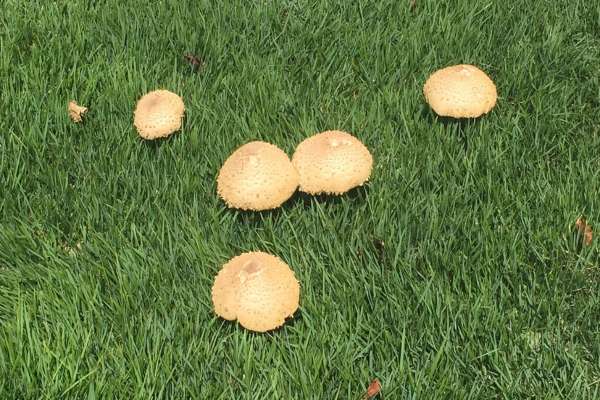
Proper storage of lawn equipment plays a surprisingly significant role in mushroom prevention. Moisture can accumulate in improperly stored equipment, fostering fungal growth that could be transferred to your lawn during use. Ensuring that mowers, rakes, and other tools are clean and dry before storage prevents the spread of fungal spores. Additionally, maintaining yard equipment in good condition ensures that it operates efficiently, helping to keep your yard healthy and less hospitable to mushrooms. For instance, a sharp mower blade provides a clean cut that promotes grass health, reducing stress and susceptibility to fungal invasion.
Organizing a Designated Storage Space
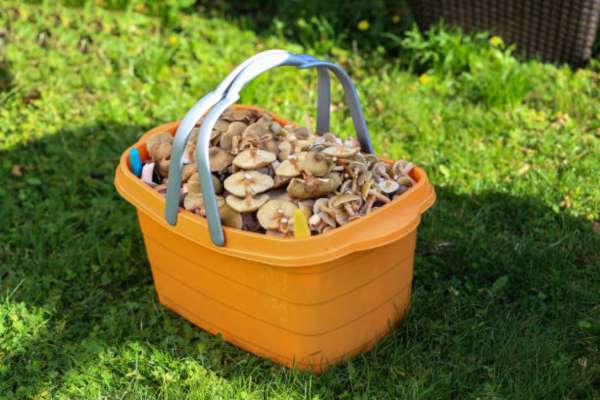
An organized and designated storage space for lawn care equipment is more than a convenience; it’s a strategic measure in the battle to get rid of mushrooms in your lawn. Damp, cluttered storage areas can harbor fungal spores, which might be unwittingly transferred to your yard through your equipment. By creating a clean, dry, and organized storage space, you reduce the risk of spreading these spores. Ensure that all tools and machines are cleaned and dried before storing them away. This practice not only prolongs the life of your equipment but also supports your efforts in maintaining a mushroom-free lawn. Regularly organizing your storage area and inspecting equipment for cleanliness can play a crucial role in your overall yard care strategy.
Lawn Disease Identification
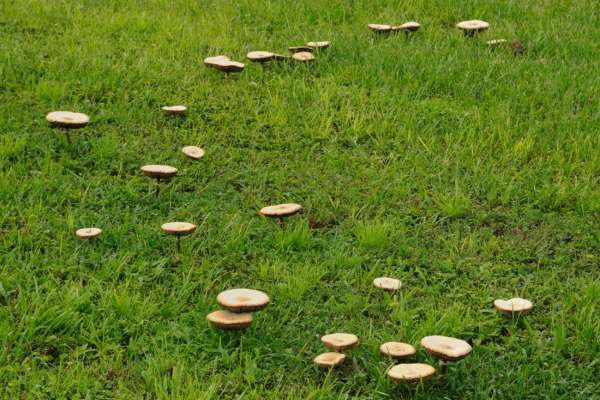
Identifying lawn diseases early is key to get rid of mushrooms from overtaking your lawn. Many lawn diseases create the ideal conditions for mushrooms to thrive, such as increased moisture and organic decay. By becoming familiar with common signs of disease in your grass, such as discoloration, spots, or thinning areas, you can take timely action to address these issues. Early identification and treatment of yard diseases can halt the progression and prevent the conditions that mushrooms need to grow. Implementing regular lawn inspections and learning about diseases common to your area can greatly enhance your ability to maintain a healthy, vibrant yard without the intrusion of unwanted fungi.
Solarization for Mushroom Prevention
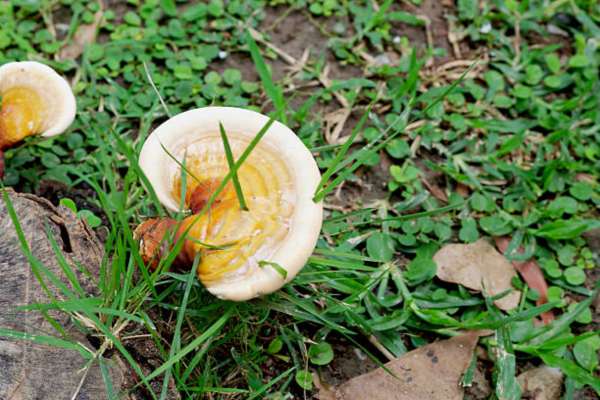
Solarization is an effective, chemical-free method for preventing mushroom growth in your lawn. This process involves using clear plastic sheeting to cover and heat the soil to high temperatures, effectively killing off mushroom spores, unwanted seeds, and harmful pathogens. During the hottest months, lay the plastic over affected areas for 4 to 6 weeks. The sun’s rays will be trapped under the plastic, raising the soil temperature to levels that are inhospitable to mushrooms. Besides its efficacy in mushroom prevention, solarization also improves soil health by killing diseases and pests, making it a beneficial practice for overall yard care. Integrating solarization into your yard maintenance routine during the peak summer months can provide a significant advantage in keeping your yard mushroom-free.
Maintaining an Optimal Grass Height
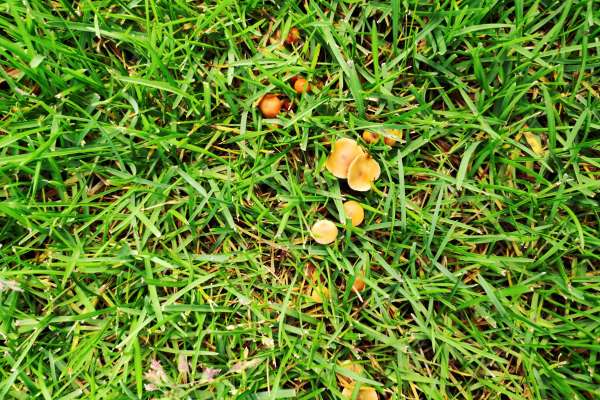
Maintaining an optimal grass height is crucial for a healthy yard and effective mushroom control. Grass that is too short can be stressed and susceptible to diseases, while grass that is too long can retain too much moisture, creating an environment conducive to mushrooms. The ideal grass height varies by species but generally, keeping your yard about 2 to 3 inches tall helps the grass to be healthy and competitive against weeds and fungi. Regular mowing, with adjustments based on seasonal growth rates, ensures that your yard remains at this optimal height, promoting a dense and vigorous turf that resists mushroom growth. This simple yet effective practice is a cornerstone of effective yard care and plays a vital role in achieving and maintaining a mushroom-free yard.
The Final Thought
Getting rid of mushrooms in your lawn requires a combination of proper lawn care practices and targeted treatments. By improving drainage, reducing thatch buildup, and adjusting watering habits, you can create an environment that is less conducive to mushroom growth. Additionally, using fungicides or natural remedies can help eliminate existing mushrooms. Remember to regularly monitor your yard and make adjustments as needed to prevent future outbreaks. With dedication and persistence, you can maintain a healthy and mushroom-free yard for years to come. Take action today to reclaim your yard from unwanted fungi!
